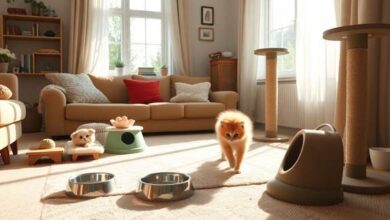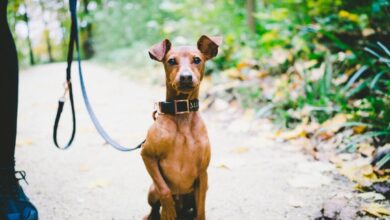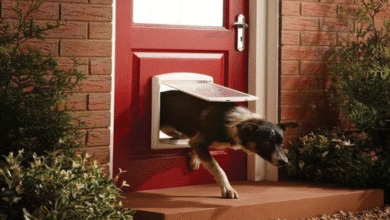Pet-Friendly Landscaping: Creating a Safe and Beautiful Outdoor Space for Your Pets

For pet owners, a backyard is more than just an outdoor space—it’s a playground, a sanctuary, and a place where their furry friends can roam freely. But not all landscaping is pet-friendly. Some plants can be toxic, hardscapes can be hazardous, and a poorly designed yard can pose various risks. The key to creating a safe and beautiful outdoor space is to design with your pet’s needs in mind. Let’s explore how you can craft a pet-friendly landscape that keeps your pets safe while maintaining an aesthetically pleasing yard.
1. Choose Pet-Safe Plants
Many common garden plants are toxic to pets, so selecting pet-friendly vegetation is crucial. Some safe choices include:
- Marigolds – Non-toxic and great for repelling pests.
- Sunflowers – Bright and cheerful, they pose no harm to pets.
- Rosemary & Basil – Safe herbs that also serve culinary purposes.
Avoid toxic plants such as oleander, lilies, sago palms, and azaleas, which can be deadly if ingested by pets.
2. Secure Your Boundaries
Ensuring your pets can’t escape or get into trouble outside your yard is essential. Consider these options:
- Secure Fencing – A sturdy fence prevents pets from wandering off. Opt for materials like vinyl or wood with smooth edges to avoid injuries.
- Invisible Barriers – If a physical fence isn’t an option, pet-friendly landscaping techniques like dense shrubbery or strategically placed garden beds can create a natural boundary.
3. Design a Safe Play Area
Pets, especially dogs, need space to run and play. Designating a specific play area can help keep your landscape intact.
- Soft Grass or Pet-Friendly Ground Cover – Grass varieties like Bermuda or Buffalo grass are durable and soft on paws.
- Mulch Alternatives – Wood chips and cocoa mulch can be harmful; opt for cedar or rubber mulch instead.
- Paths & Walkways – Use paw-friendly materials like flagstone, decomposed granite, or smooth pebbles to create pet-friendly walkways.
4. Provide Shade & Shelter
Just like humans, pets need protection from the sun and harsh weather. Incorporate:
- Shaded Areas – Trees, pergolas, or pet-friendly shade sails offer protection from the heat.
- Pet Houses or Covered Spots – These give your pets a cozy space to relax while outdoors.
- Cool Zones – Small water features, like a shallow pet pool, can help pets stay cool during hot days.
5. Avoid Harmful Chemicals & Pesticides
Traditional pesticides, fertilizers, and herbicides can be toxic to pets. Instead:
- Use organic or pet-safe fertilizers to nourish your garden.
- Opt for natural pest repellents, such as neem oil or diatomaceous earth.
- Choose non-toxic weed control methods, like boiling water or vinegar sprays.
6. Incorporate Pet Entertainment
A well-designed landscape should keep your pet engaged and active.
- Digging Zones – If your dog loves to dig, create a designated digging pit filled with loose soil or sand.
- Obstacle Courses – Build small agility features, such as tunnels or stepping stones, for added fun.
- Interactive Elements – A small water fountain or a shallow pond can provide entertainment and hydration.
7. Safe and Functional Lighting
Outdoor lighting is essential for evening playtime and safety.
- Soft, Motion-Sensing Lights – These can help guide pets without being too harsh on their eyes.
- Pathway Lighting – Ensures pets (and owners) can navigate the yard safely after dark.
- Solar-Powered Options – An eco-friendly and energy-efficient choice for illuminating pet areas.
8. Keeping Maintenance Easy & Efficient
Maintaining a pet-friendly yard doesn’t have to be time-consuming. Landscaping business owners use landscaping business software to streamline their work, offering tailored maintenance plans for pet-friendly landscapes. This software helps homeowners and landscapers schedule regular upkeep, ensuring a safe and beautiful yard year-round.
For DIYers, regular mowing, pruning, and checking for pet hazards like thorns or sharp objects will keep your outdoor space in top shape.
Final Thoughts
Creating a pet-friendly landscape is about balancing safety, aesthetics, and functionality. With the right plants, safe materials, and engaging elements, you can design an outdoor space that both you and your pets will love. Whether you’re working with a professional landscaper or taking on the project yourself, a well-thought-out plan will ensure your furry friends have a secure and enjoyable environment to explore.




